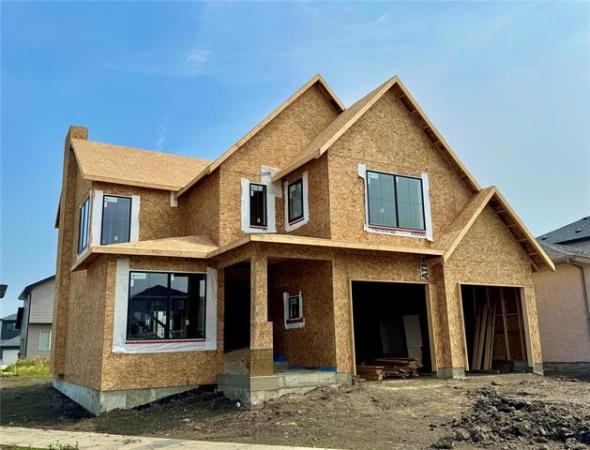An uninsulated basement can account for up to 30 per cent of the total energy loss of a house.
This chilling statistic has motivated many homeowners to reduce their monthly electric or gas heating bills by insulating their basements with fibreglass or stone-wool batts.
Here's the rub: Though this is the cheapest method of insulating, both types of batts can cause more problems than they solve, including mould growth with serious health consequences.
To save on construction costs, most new basements are not insulated on the exterior side with below-grade foam board or other approved materials. If your basement lacks proper exterior insulation (and it likely does unless built to R-2000 standards), moisture and cold will migrate from the exterior to the interior side of your basement. In this case, fibreglass batts are a poor choice of insulation because they absorb moisture formed by cold and warm air condensing on the interior side of a concrete wall, greatly reducing the insulation's stated R-value. Moreover, fresh concrete has a high water content, which takes a long time to dissipate, causing ice to form during winter months on interior basement walls behind the insulation. In spring when the ice melts, water will infiltrate the batts or, if the concrete walls have been partly covered by a six-mil vapour barrier as recommended in the building code, run behind the vapour barrier and puddle on or under the floor. Trapped moisture creates a petri-dish-like environment that promotes the rapid growth of mould; some types of this fungus can colonize (move to another area) in less than a week.
I noticed recently Manitoba Hydro replaced a video on how to insulate your basement using fibreglass with an updated version using Roxul instead. Roxul is a stone-wool product spun into batts that repel water and dry more quickly than fibreglass. The theory is moisture trapped inside the insulation or between the insulation and basement wall will dissipate before mould spores begin to grow. This is wishful thinking, as some spores are capable of germinating in 24 to 48 hours, while moisture inside insulated walls can take months to completely dry. This leaves plenty of time for mould to become well-established. In fact, most basements insulated with some form of batt will contain mould.
An initial clue to the presence of mould is a musty smell; however, until the problem gets completely out of control and the mould migrates to the outside of a finished basement wall, the only way to confirm the presence of the fungus is to remove a sheet of drywall and examine the insulation. The generic term "black mould" is commonly used to describe several types of fungus that grow in basements. If you have a serious mould problem, the insulation, wall studs and plates will be covered in black fungus that looks like soot. In less advanced situations, the batts will contain marble-like streaks of black, also visible on structural members of the wall. Mould lives on wood fibre and cellulose in paper that covers drywall. The only way to rid a basement of this unsightly and potentially toxic fungus is to tear out all the infested walls, increase filtered air flow and wash the walls, floors and ceilings with one cup household bleach to a gallon of water. (There are other premixed chemicals available from big-box stores, or you can hire a contractor to do the job for you.)
Knowing these disturbing facts, it's curious Manitoba Hydro continues to recommend the use of batt insulation in basements through its Power Smart initiative. Even more disturbing is the 2010 National Building Code of Canada, a source of Hydro's residential construction suggestions, still allows batt insulation to be used in basements, even though North America's best building scientists have been stating for years that batt insulation should never be used in basements. (Hydro spokesman Peter Kidd said the corporation could be "showing people a variety of materials" with which to insulate basements "but batt insulation has been around for a long time and proved effective in most cases.")
Effective alternatives to batts include spray foam, solid sheets of expanded polystyrene (xps) and polyisocyanurate (polyiso), as well as a new Hydro-approved product that incorporates polymer studs and sheets to create an integrated basement-insulation system.
Polyurethane spray foam is an excellent product for insulating basement walls because it expands and seals the smallest declivities and cracks in concrete and acts as a vapour barrier at the same time. It has a high insulation value of about R-7 per inch.
The cons are spray foam is the most expensive insulation on the market, and, if not applied in the correct chemical ratio, it will not set properly, creating a fishy smell and a potential health problem due to continuous off-gassing.
Xps and polyiso are polymer-based boards (generally sold in four-by-eight-foot panels) with insulation values of about R-4.5 and R-6.5 per inch, respectively. They will not absorb moisture and can be used to insulate interior basement walls by gluing them directly to the concrete with construction adhesive formulated for polymers; then sealing the joints with tape or canned spray foam. The downside to this technique is there is no wood frame on which to screw a finish covering such as drywall. Some people glue drywall directly to the insulation board, but this technique is not recommended, as it does not properly secure the drywall to the substrate. The alternative is to build a wood-frame wall and cut the insulation to friction-fit between the studs and plates, sealing the join between the wood and insulation with bottled spray foam. This method is more expensive and labour-intensive, but it will ensure a solid structure to which Gyproc or other materials can be screwed or nailed.
The cons to polymer-based boards are the high cost compared to fibreglass or Roxul and, as mentioned, the need to build a frame wall to properly support the exterior finish. A less expensive alternative is to construct a hybrid wall consisting of one-inch sheets of xps or polyiso glued to the concrete and a wood frame filled with fibreglass or mineral-wool batts placed over top. This method is also compatible with commercially applied spray foam.
A new product recently approved for Hydro Power Smart programs is the Quick-Therm Basement and Concrete Insulation System. It is called a system because it is comprised of individual parts that fit together to form an integrated envelope that seals air leaks and prevents moisture infiltration in basement walls. Moreover, it is simple for a DIYer to install with a minimal selection of tools. The main components are polystyrene panels covered both sides with a shiny material that reflects radiant heat back into the basement or reflects cold air back into the concrete wall. High-density polymer studs are attached to the panels by a tongue-and-groove joint that is sealed with window and door spray foam. A polymer gasket seals the panels and studs to the basement floor. There is no thermal bridging (heat transfer) between the polymer studs or the panels, which are held tight to the wall with two plastic concrete fasteners.
The con to this system is higher cost compared to batts. However, at about $3 per square foot, it is less expensive than spray foam at $5 to $6 per square foot, but not much more expensive to install than a framed basement wall containing two layers of R-14 Roxul. And that wall could cost you a fortune to remove and replace if mould spores germinate inside of it.
davidsquare81@yahoo.com



